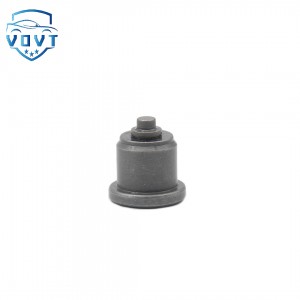High Quality Delivery Valve F1082-0108 Diesel Engine Spare Parts
Products Description
| Reference Codes | F1082-0108 |
| Application | / |
| MOQ | 12 PCS |
| Certification | ISO9001 |
| Place of Origin | China |
| Packaging | Neutral packing |
| Quality Control | 100% tested before shipment |
| Lead time | 7~15 working days |
| Payment | T/T, L/C, Paypal, Western Union, MoneyGram or as your requirement |
Dynamic Characteristics of Delivery Valve Opening and Closing and Their Influence on Flow Pulsation in Plunger Pumps
Abstract
The delivery valve is one of the most critical components in high-pressure plunger pumps, directly determining the stability of fuel delivery and overall pump efficiency. During each reciprocating cycle of the plunger, the opening and closing behavior of the delivery valve strongly influences the transient flow field and pressure dynamics. This study investigates the dynamic characteristics of the delivery valve during its opening and closing processes and analyzes how these transient behaviors affect flow pulsation within the plunger pump.
A coupled fluid–structure interaction (FSI) model was developed to simulate the motion of the valve under varying operating pressures and plunger speeds. The model captures the valve lift, impact force, pressure oscillation, and backflow phenomena in real time. Key parameters—including valve mass, spring stiffness, damping coefficient, and seat cone angle—were systematically varied to understand their effects on valve response and flow stability.
The simulation results indicate that:
-
A larger valve mass delays the opening phase and increases the amplitude of flow pulsation.
-
Higher spring stiffness accelerates valve closing but leads to stronger impact forces and higher pressure oscillations.
-
Optimizing the damping coefficient effectively suppresses valve bouncing and stabilizes outlet pressure.
-
The valve cone angle significantly affects local flow separation and backflow intensity during the closing phase.
Experimental validation was conducted on a high-pressure test bench equipped with a displacement sensor and high-frequency pressure transducer. The experimental data were consistent with the simulation predictions, showing that the optimized valve parameters reduced the root mean square (RMS) of pressure fluctuation by 18.6% and improved the volumetric efficiency by 4.8%.
The study concludes that precise control of the delivery valve’s dynamic response is essential for minimizing flow pulsation and improving the overall performance of plunger pumps. The proposed FSI-based approach provides a reliable theoretical and numerical foundation for the optimization design of low-pulsation high-pressure fuel pumps. Future work will focus on adaptive valve structures and smart damping mechanisms to achieve real-time control under variable operating conditions.

























